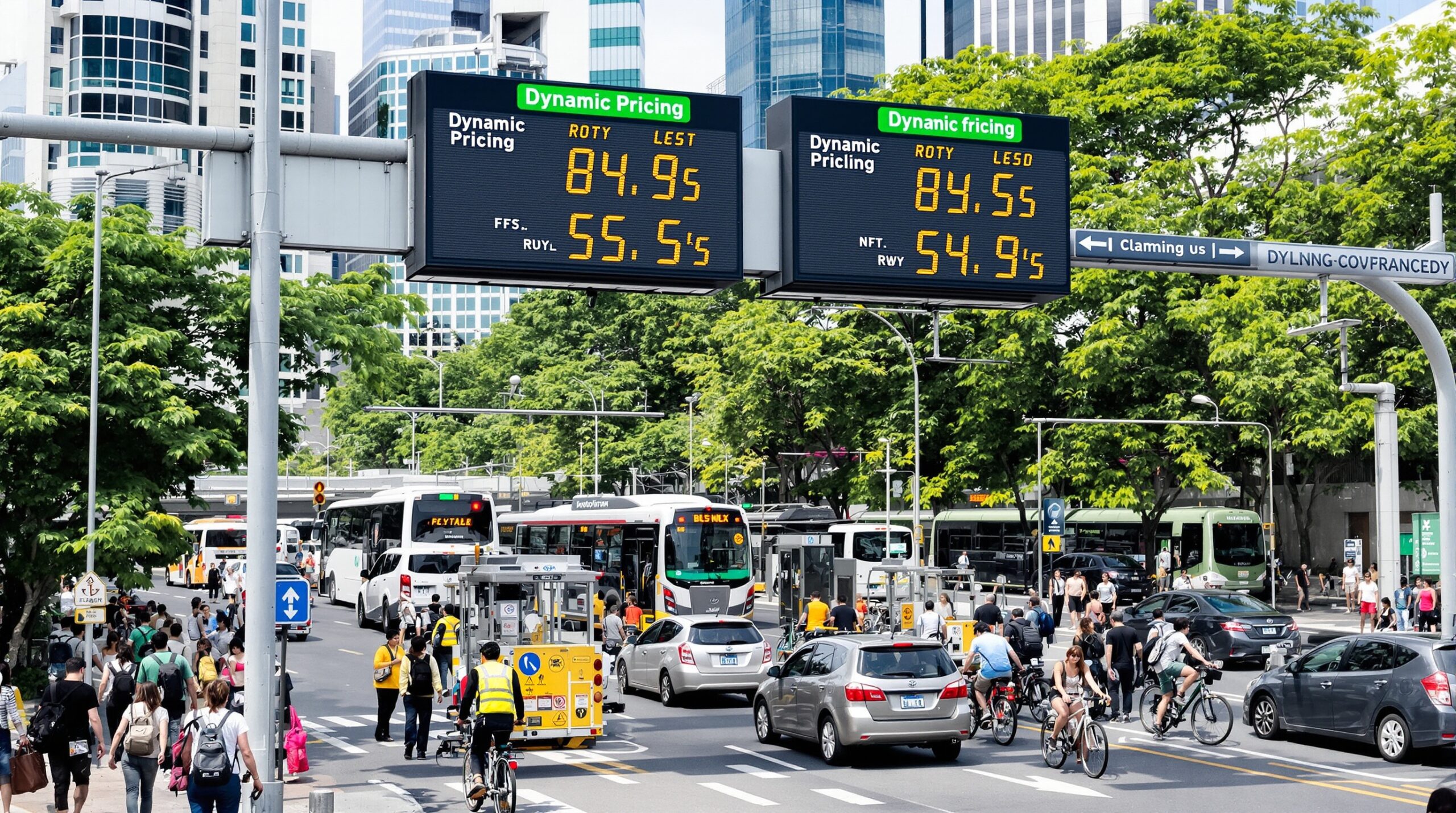Many urban centers face relentless congestion and mounting demands on transportation infrastructure. City planners are exploring innovative solutions to address these challenges directly. One such measure is dynamic road pricing, an approach that adjusts fees for road usage based on congestion levels, time of day, and zone.
Understanding Dynamic Road Pricing
Dynamic road pricing discourages unnecessary driving during peak hours and encourages the use of public transit. Traditional tolls remain static, but dynamic models flexibly set prices by real-time conditions. The system often relies on technology such as GPS, mobile apps, and electronic toll collection.
Under dynamic pricing, traveling on a specific route during rush hour can cost significantly more than the same journey late at night. Authorities can fine-tune traffic flow while offering commuters choices that impact both their finances and their schedules. Dynamic road pricing thus acts as both a deterrent and a guide toward optimal transport behaviors.
Pilot Programs in Major Cities
London, Singapore, and Stockholm have long used congestion pricing with success. However, the latest pilots in cities like New York and Seattle add real-time dynamic elements, adapting to current congestion. These programs experiment with price fluctuations and zone-based tolling in densely traveled urban corridors.
New York’s imminent Central Business District Tolling Program dynamically adjusts charges for driving into Manhattan’s central area. Authorities anticipate reductions in traffic volumes and a significant new funding stream for regional transit services. Planners closely observe how pricing impacts commuter choices and street-level congestion.
Leveraging Technology to Manage Traffic
Modern systems depend on data algorithms to continually assess traffic flows and set prices. Automatic License Plate Recognition (ALPR) cameras and GPS-based smartphone applications track vehicle entries and exits in priced zones. Technology enables quick adjustments, ensuring the pricing scheme responds to real-world travel patterns.
Some programs allow travelers to check real-time fees before starting their journey. This transparency helps drivers make informed decisions about trip timing and transportation modes. As more cities digitize transportation networks, deploying scalable dynamic pricing becomes much more achievable.
Cutting Congestion and Emissions
The primary goal of dynamic road pricing is to reduce gridlock during peak periods. By raising fees when demand surges, cities encourage carpooling, transit use, or off-peak travel. Fewer cars clogging the roads lead to smoother traffic and quicker commutes for those who must drive.
Environmental benefits also make dynamic pricing an attractive policy tool. Decreased idling slashes vehicle emissions and helps urban areas meet climate targets. As air quality improves, local health metrics often trend in the same positive direction. This creates a compelling case for integrated traffic and environmental policy making.
Supporting and Funding Transit
Revenue generated from dynamic road pricing does not simply disappear into city budgets. Most cities design programs to directly fund public transit system upgrades. Better transit options further entice commuters to leave their personal vehicles at home.
For example, London’s congestion charge finances bus service enhancements and expanded cycle routes. Stockholm invests toll revenue in extended metro lines. New York’s planned tolling will support subway repairs and modernization, promising a virtuous cycle of mobility improvements and congestion relief.
Equity and Public Acceptance
Not everyone benefits equally from dynamic road pricing. Lower-income communities often express concern about the fairness of new fees. To address equity, city leaders may offer discounts, exemptions, or alternative transit passes for impacted groups.
Public acceptance remains crucial to success. Transparent communication is vital to building trust and overcoming skepticism. London’s experience shows acceptance can grow over time, especially as transit improvements materialize and traffic declines.
Case Study: Seattle’s SR 99 Tunnel
Seattle launched dynamic tolling on its SR 99 tunnel to manage traffic in the city’s rapidly growing core. Prices fluctuate based on time and demand, aiming to distribute traffic more evenly throughout the day. Initial reports suggest smoother traffic flow and steady transit ridership upticks.
City officials continue to monitor tolling equity closely. Seattle offers income-based discounts and works with community groups to assess ongoing impacts. This careful tracking provides a template for other cities interested in balanced and fair dynamic pricing.
Dynamic Pricing Around the World
Global cities are watching these pilot projects closely. Singapore’s Electronic Road Pricing remains one of the earliest and most sophisticated models, continually evolving since the 1990s. Stockholm’s shifting inflation-adjusted fees demonstrate long-term commitment to sustainable traffic management.
Asia, Europe, and North America each feature tailored versions of dynamic pricing. Customization allows cities to account for differences in road networks, congestion patterns, and existing public transit infrastructure. Results consistently highlight declines in car traffic and improved transit funding streams.
Challenges and the Future of Urban Mobility
No system is without challenges. Implementing dynamic pricing requires substantial investments in technology, enforcement, and public engagement. Cities must balance security, privacy, and efficiency to ensure broad support and legal compliance.
As urban populations grow, pressure increases to modernize roadways and transit networks. Dynamic road pricing provides planners with a powerful lever to nudge behavior and secure funding for long-term upgrades. Successful examples promote a reimagining of urban mobility in favor of sustainability and equity.
Conclusion: A Path Forward for Traffic and Transit
Dynamic road pricing offers real promise for cities battling congestion and insufficient transit resources. When designed with strong equity safeguards and transparent intentions, dynamic pricing can transform urban transportation.
Cities adopting dynamic pricing not only cut traffic but also fund transit improvements and reduce emissions. These long-term benefits shift urban mobility toward a more efficient, affordable, and environmentally friendly future.
As more urban centers refine these strategies, a new era of smarter, data-driven transportation policy comes into sharper focus. With careful planning, cities can shape streets that prioritize people, cleaner air, and resilient movement for all.

